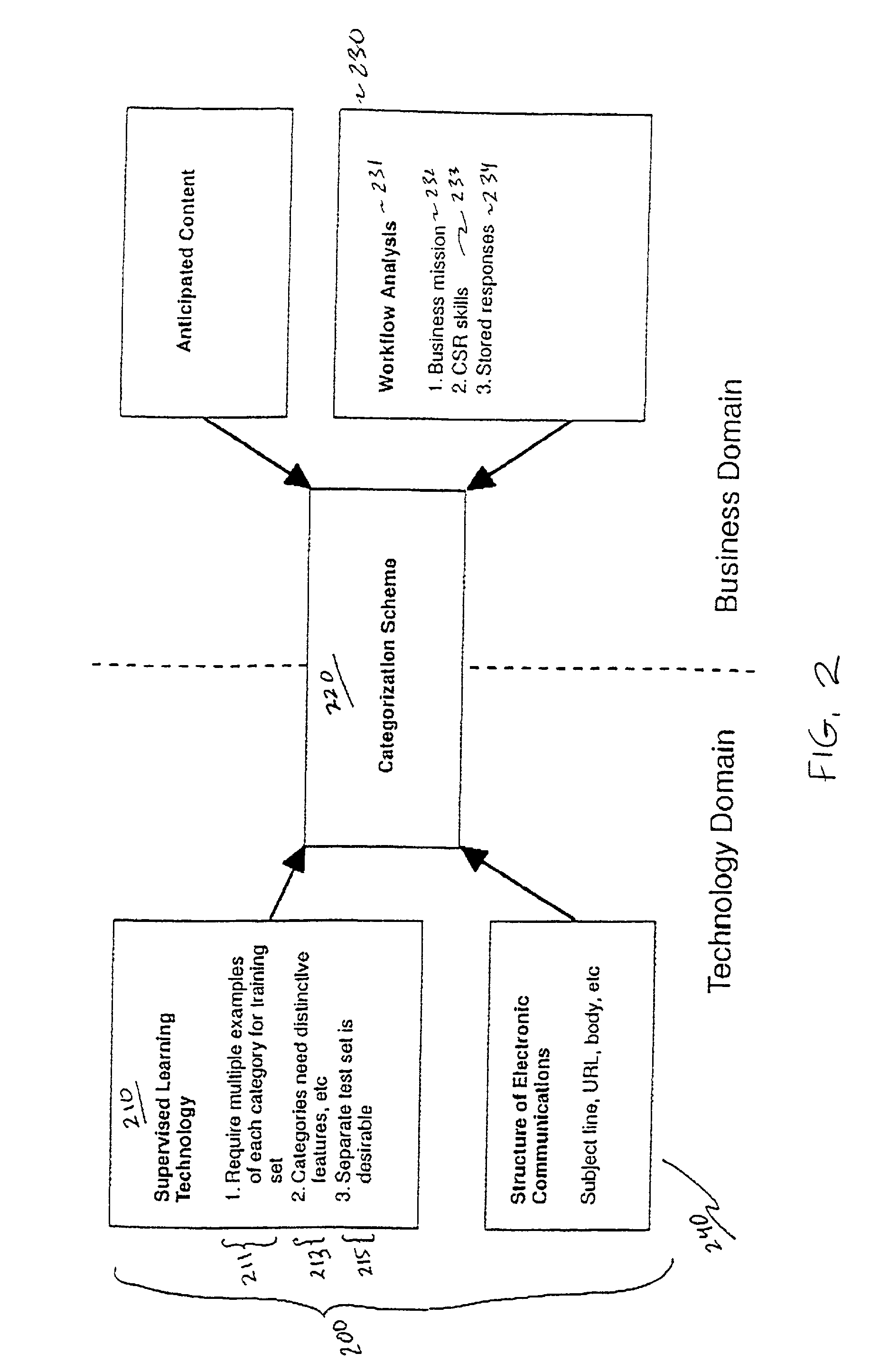Methodology for creating and maintaining a scheme for categorizing electronic communications
a technology of electronic communications and categorizing schemes, applied in the field of computer-assisted processing of electronic communications, can solve the problems of inability to meet the needs of users, not desirable, and often too complicated initial representations of features for computers to handle,
- Summary
- Abstract
- Description
- Claims
- Application Information
AI Technical Summary
Problems solved by technology
Method used
Image
Examples
Embodiment Construction
[0042] To develop the procedure for categorizing incoming electronic communications, supervised learning technology can be based on decision trees or on logical rules or on other mathematical techniques such as linear discriminant methods (including perceptrons, support vector machines and related variants), nearest neighbor methods, Bayesian inference, etc. Feature selection is included as part of supervised learning, for the following discussion.
[0043] Referring again to the drawings, FIG. 2 illustrates a high-level analysis of additional factors that must be considered in constructing a categorization scheme that works well for automated response and routing of electronic communications using a categorizer constructed using supervised learning. The categorization scheme 220 is the key to linking the business domain 230 and the technology domain 200 for electronic communications. The business domain 230 contributes a workflow analysis 231, carried out in the context of the busines...
PUM
 Login to View More
Login to View More Abstract
Description
Claims
Application Information
 Login to View More
Login to View More - R&D
- Intellectual Property
- Life Sciences
- Materials
- Tech Scout
- Unparalleled Data Quality
- Higher Quality Content
- 60% Fewer Hallucinations
Browse by: Latest US Patents, China's latest patents, Technical Efficacy Thesaurus, Application Domain, Technology Topic, Popular Technical Reports.
© 2025 PatSnap. All rights reserved.Legal|Privacy policy|Modern Slavery Act Transparency Statement|Sitemap|About US| Contact US: help@patsnap.com



